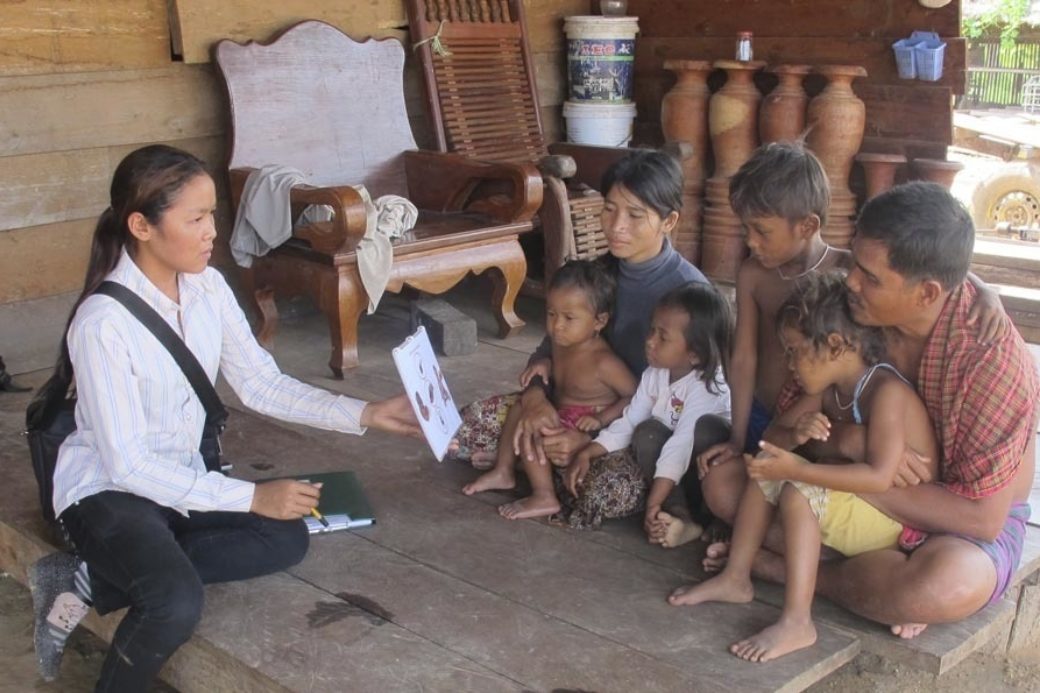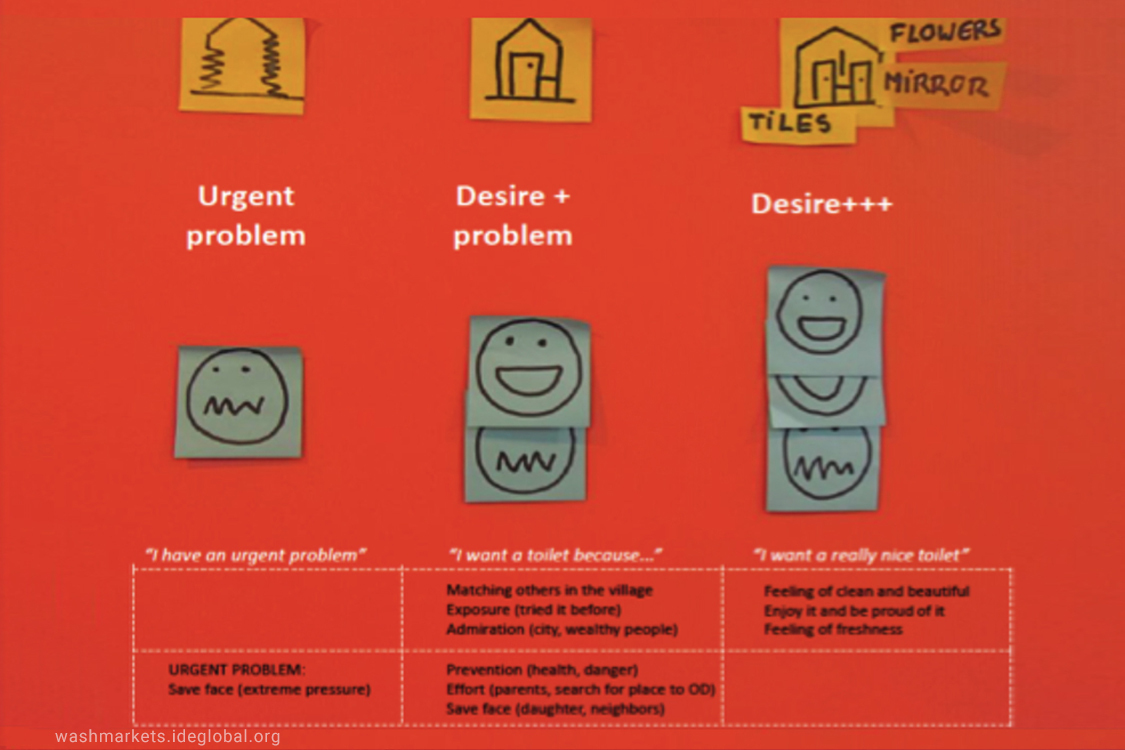In-depth interviews reveal what consumers want and need

Insights
Prior to product design, talk to market actors—consumers, manufacturers, supply chain—to find out their challenges and desires.
Market Segmentation Research
In order to go beyond the “early adopters” who purchased latrines under the Cambodia pilot project in 2011, more research was needed to better understand the drivers and barriers of various market segments. iDE spent a month conducting human-centered design (HCD) research to ground efforts to more deeply penetrate the market. Research included user insights to understand the needs and motivations of latrine users and non-users as well as over 40 in-depth interviews with user and non-user households and supply chain actors. The research findings informed five frameworks for better understanding users and their latrine purchasing process. [Footnote 1]

1. Comparing the latrine to other assets
The latrine had not been a purchase priority because it did not generate positive financial or emotional returns. Households valued ownership of tangible things, especially things that could serve as an investment and generate more income. However, most households owned latrines to save face, which moves them from a negative state of embarrassment and shame to a neutral state of not being embarrassed or ashamed.

2. Positioning the latrine to generate a positive return, either financially or socially
Households who perceived themselves to be extremely poor, who took care of young children, and who had access to a toilet nearby were the least likely to purchase a toilet. Households who perceived themselves to be able to afford a toilet, who had elderly parents, and who only had access to crowded areas without bushes were the most likely to purchase. Recognition of a problem (embarrassment) and/or a desire (to match neighbors) helps drive household purchases.

3. Mapping purchase motivations to product categories
Households buy different kinds of latrines and shelters based on different motivations. Those who want to satisfy an urgent problem, such as social pressure, will often build a cheap natural shelter. Those who are looking to solve a problem and satisfy an aspirational desire will likely purchase a concrete shelter. Those who are looking to satisfy higher-level aspirations such as aesthetics and enjoyment will likely invest in a bathroom with the works—tiles, mirror, large water basin, and flowers.

4. Household latrine purchase experience
The research mapped the household latrine purchase process for both iDE’s Easy Latrine and other latrines. The mapping showed that despite innovations in the pilot project, the latrine purchase process can be simplified even further. Households preferred to not have to deal with different actors at each step of the process and desired easy access to accurate product options and prices. Moreover, supply chain actors such as the sales agents, village chiefs, and masons must be leveraged fully to drive households to purchase.

5. Psychographic market segmentation of non-latrine owners
The research findings about those open to buying latrines were then reframed into the Transtheoretical Model of behavior change, which assesses an individual’s readiness to act on a new healthier behavior, and provides strategies, or processes of change to guide the individual through the stages of change from Precontemplation (not even considering the change), to Contemplation (starting to consider the change), to Preparation (getting ready to make the change), to Execution (acting), and finally to Maintenance of new behavior (consistently acting according to the new behavior). Mapping the influencers, barriers, and accelerators onto the various stages of behavior change allowed the project to design interventions to address the specific needs of each stage. The user insights and market segmentation research informed the sales, marketing, and enterprise engagement strategy.
Further segmenting the market
Once iDE began scaling the sanitation market in earnest, data was collected to identify other potential market segmentations. For example, one project funder wanted to know how we could better serve people with disabilities in Cambodia, where many have lost limbs to landmines. These customers needed significant changes to the latrine design in order to accomodate wheelchairs and other assistive devices. Rather than a squat pan, wheelchair users could benefit from a toilet with a seat, but this created an additional challenge as seated toilets require more water to flush. Sturdy handrails to help transfer the user from the wheelchair to the seat were another need that had to be considered.
Another new market segmentation was how to deal with challenging environments, such as customers in locations where the water table was only inches from the surface or rural customers whose home was built on stilts above the water. In these locations, iDE’s research identified that a sealed, above-ground pit could address the immediate issue, but this also led to the need to further address fecal sludge management issues as these pits would likely fill at a higher rate than below-ground versions.
See "Going Deep: Findings and Recommendations" for more information about this research.